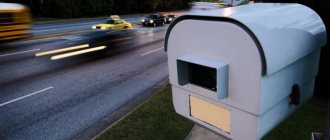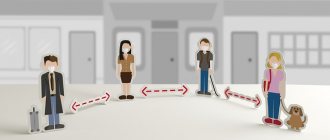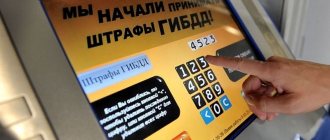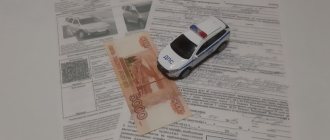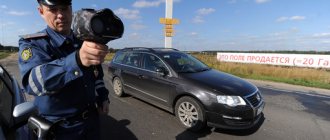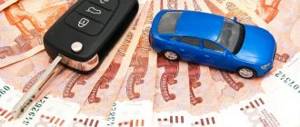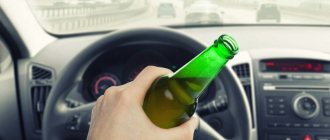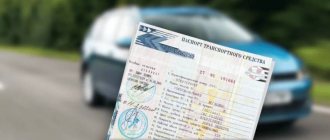Do not drive fast
For speeding from 20 to 40 km/h, a fine of 3 thousand rubles is introduced, compared to today's 500 rubles. The heads of the State Traffic Inspectorate voiced this idea last year. In their opinion, a fine of 500 rubles is not perceived by drivers as a punishment. They consider it a fare. Moreover, with a 50 percent discount for timely payment.
For exceeding the speed limit by 40-60 km/h, it is proposed to be punished with a fine of 4 thousand rubles. Now - 1000-1500 rubles. And for speeding by more than 60 km/h - a fine of 5,000 rubles or deprivation of rights for 4-6 months. Moreover, if now for repeated speeding by more than 40 km/h there is only a threat of an increase in the fine, then if the new Code of Administrative Offenses is adopted in this form, this will result in the risk of deprivation of rights for a year.
By the way, the discount for paying the fine remains. And it must be said that exceeding the speed limit by 20-40 km/h is the most popular violation.
Sberbank Online
QR Code
Sberbank Online
Developer: Sberbank of Russia
Price: Free
The service is popular among citizens. One of the best applications for checking and paying traffic fines is convenient. The procedure for obtaining information includes three stages:
- You need to go to Sberbank Online, select the “Payments” section and click on the “Taxes, fines, duties, budget payments” category.
- In the window that opens, click on the “Fines” button and select and then select “Search for fines”.
- You need to fill out the form and submit your request.
Detailed instructions on how to search for and pay traffic police fines through Sberbank Online
The user carries out the verification based on information from the driver's license or vehicle registration certificate. The application administration warns that in some regions the service may work intermittently. As a result, the portal does not always display violations that the driver has. The reason for the interruptions is the delay in the transfer of information by the state traffic inspectorate to the GIS GMP.
If there are fines, the user can pay them. The service provides services for paying debts on an already issued receipt and payment with a 50% discount within 20 days from the date the traffic police fine is issued. The user can set up "Autopayment". When connected, the Sberbank application independently checks and the payment is made automatically.
Drunks get extra time
A new offense has been added to driving while intoxicated, as well as refusing to undergo a medical examination. If a driver is caught driving drunk, he faces the same punishment as now - deprivation of his license for one and a half to two years and a fine of 30 thousand rubles. But if at the same time there was a minor child under 16 years old in the car, then the driver will face deprivation of his license for 2-3 years and a fine of 50 thousand rubles.
The concept of intoxication has changed. In addition to the established 0.16 milligrams of ethanol per liter of exhaled air and 0.3 ppm in the blood of the presence of narcotic and psychotropic substances in the body, “others causing intoxication” are added.
You will have to pay six times more for speeding
Car on bail
But this is not the only increase in the liability of drunk drivers. The Procedural Code provides for new interim measures. In particular, a deposit for a car. That is, they stopped a drunk driver, a medical examination showed that he was using alcohol. The car is sent to the impound lot. But it won't be easy to take her away from there. Now he can pick her up himself, having sobered up. Maybe ask a sober friend about it. But according to the new code, he will be able to pick up the car only after paying a deposit in the amount of a fine or after paying the appropriate fine. That is, 30 or 50 thousand rubles.
The second interim measure is a temporary restriction of the right to drive. The fact is that only a court can deprive rights. But it may take quite a long time before the trial occurs from the moment the violation is committed. And all this time, the driver who is caught drunk remains with a license and can drive a car. To exclude such situations, a temporary restriction of the right to control was introduced. It is applied directly by the inspector.
By the way, refusing a medical examination will cost more than intoxication detected by doctors. It is proposed to introduce a fine of 40 thousand rubles and deprivation of rights from 2 to 3 years.
Prohibiting traffic signs - what are they?
The effect of prohibitory traffic rules signs is to restrict the maneuvers of vehicles on a certain section of the road or adjacent territory. This also includes symbols that outline their zone of influence and cancel requirements.
For ease of perception, prohibition signs can be divided into several categories.
Restricting traffic and entry
The first subgroup includes symbols that make it impossible to enter somewhere or move a car in a specific area:
- 3.1. Installed on a one-way section, near a gas station, on the border of a parking lot, etc. The symbol means that vehicles cannot enter the area it protects.
- 3.2. Prevents the movement of the vehicle. That is, you can neither enter nor leave the area of its coverage. It should be free of cars.
- 3.3. Does not allow movement of mechanical vehicles. Only vehicles of this type are not allowed to enter or exit under it; other types of vehicles are allowed.
- 3.4. It prohibits trucks weighing more than 3.5 tons, tractors and self-propelled vehicles from moving through the territory limited by it. Sometimes there is a number on the symbol indicating the weight of cars that cannot be driven here.
- 3.5. Motorcycles are not allowed.
- 3.6. If there is one, you should not enter or exit the site with a tractor or other self-propelled equipment.
- 3.7. Warns that the movement of a vehicle with a trailer is prohibited. But only if it belongs to the category of cargo or self-propelled transport.
The sign does not prohibit cars from driving with trailers
- 3.8. Does not allow horse-drawn vehicles on the site. These are carts designed for use in winter and summer, pack animals.
- 3.9. Prevents traffic on bicycles. The ban applies to scooters, mopeds and other similar equipment.
- 3.10. Pedestrians are not allowed on the premises. Installed where movement poses a danger to them.
- 3.32. and 3.33. The symbols are similar in that they do not allow vehicles with special cargo to move. The first limits it to dangerous contents, the second to explosive and flammable contents.
Car weight limit
The following subcategory includes the following designations:
- 3.11. It does not allow the passage of a vehicle with a weight equal to or greater than that indicated on it.
- 3.12. The ban applies to cars whose axle weight is higher than what is on the sign.
- 3.13, 3.14 and 3.15. Restrict the movement on a section of the road of cars whose dimensions exceed those indicated on the symbols. In the first case we are talking about the height of the vehicle, in the second – about the width, in the last – about the length.
More on AutoLex.Net:
Road sign “One-way traffic” and rules for driving under it, main signs and traffic rules
They are used where the passage of such vehicles is technically impossible.
Prohibition on traveling without stopping
Sometimes, in order to proceed further, the car needs to go through a special procedure or delay to avoid a threatening situation. For such cases there are symbols:
- 3.17.1. Indicates that you need to obtain permits at customs, which requires a stop.
- 3.17.2. It is placed in case of danger on the road. Cars should hold off without crossing until the threat has passed.
- 3.17.3. Installed to indicate a control point. It can be border, security, epidemiological, but it also requires a stop.
Car trajectory limitation
If vehicles should not go in a certain direction, there is one of the signs on the road:
- 3.18.1. Doesn't allow you to turn right.
- 3.18.2. You can't drive to the left while wearing it.
- 3.19. Doesn't allow you to turn around.
The “No left turn” sign does not prohibit turning around for traffic in the opposite direction.
The first two are installed at intersections. The third may also be in an area outside of it. But each prohibits only one action. For example, you cannot turn around, but you can go left or right.
Limiting specific actions while moving
The ban may apply to driving in a certain mode. Then use the symbols:
- 3.16. Sets the minimum distance from which movement is allowed.
- 3.20. Does not allow overtaking in the area (this does not apply to slow-moving vehicles, horse-drawn vehicles, motorcycles, mopeds, etc.).
- 3.22. Acts like the previous sign, but trucks must obey it.
- 3.24. Sets the maximum speed of the car.
- 3.26. Prohibits turning on the sound signal.
- 3.27. Prevents stopping, even for a short time.
- 3.28. Doesn't allow parking, but allows you to stay for 5 minutes, no longer.
- 3.29 and 3.30. The previous action is limited, but the first one is on odd dates, the second one is on even dates.
Difficulties of registration
Now let's see what the registration of a drunk driver will entail. First, the inspector must draw up a protocol on the driver’s removal from control. After this, an examination for alcohol intoxication is carried out in the presence of two witnesses or under video recording. That is, the driver is asked to breathe into the breathalyzer. An act regarding this is drawn up. If the driver does not agree with the readings of the device or the device shows zeros, but the inspector still has doubts, then the driver is sent for a medical examination. A protocol about this is drawn up in the presence of two witnesses or on video recording. Based on the results of the medical examination, a report is drawn up. If it is determined that the driver is drunk, a violation report is drawn up. The detention of a vehicle is documented in a separate document. And now two more are being added to all this - a protocol on the application of bail on a detained car and a protocol on temporary restriction of the right to drive. In total, the inspector will issue eight documents per violator!
If a driver commits three gross violations within a year, he will face deprivation of his license for a period of one to one and a half years.
Car for the benefit of the state
If you drive while intoxicated again, you will not only have to face criminal charges, but also lose your car. Confiscation of the vehicle in favor of the state is introduced. In this case, the car will be confiscated even if it belongs to another person.
Confiscation directly from a drunken owner will be spelled out in amendments to Article 264.1 of the Criminal Code. While they are being developed. And the owner, who handed over control to a driver punished for driving while intoxicated, will have the car taken away under the new Article 34.34 of the new Code of Administrative Offenses for “failure by the owner of the vehicle to take measures to exclude the possibility of another person committing a crime under Article 264.1 of the Criminal Code using this vehicle.” .
Let us explain, the driver was caught drunk driving someone else’s car. He was deprived of his license, fined, and a copy of the decision was sent to the owner of the car. If after this a drunk driver is caught driving the same car again, he will be tried under Article 264.1 of the Criminal Code, and the car will be confiscated from the owner under Article 34.34 of the Administrative Code.
It is worth recalling that the driver is considered subject to punishment for a year after serving it. That is, if his license was returned and he was caught driving drunk again within a year, he will be tried under Article 264.1 of the Criminal Code as a repeat violation. And the owner of the car, who entrusted him with driving, will be left without a car.
My official traffic police fines: verification and payment
The app was not found in the store.
